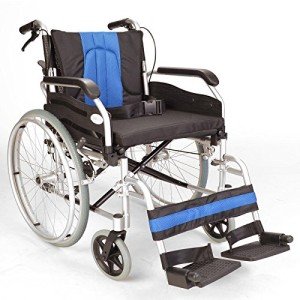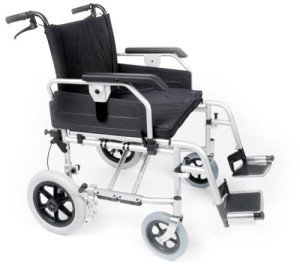The Most Hilarious Complaints We've Heard About Bariatric Living Aids
페이지 정보

본문
 Bariatric Living Aids
Bariatric Living Aids Bariatric (overweight) patients need heavy duty mobility aids to help them maintain independence. Utilizing small equipment increases personnel strain and threats injuries to both the patient and caretaker.
Bariatric (overweight) patients need heavy duty mobility aids to help them maintain independence. Utilizing small equipment increases personnel strain and threats injuries to both the patient and caretaker.Ensure that equipment is correctly sized by carrying out home evaluations. Expand hallways, doors, and ramps if needed for bariatric manual wheelchair equipment to securely access homes.
Walking Aids
Strolling aids are bariatric manual wheelchair Mobility Equipment (Https://Telegra.Ph) suggested by a doctor or physio therapist to preserve your independence and help you recuperate from injuries, surgery or discomfort. They are also used long term for people with muscle weakness or balance issues. They are available in a series of types to meet your requirements consisting of, walking canes, rollators and walkers for higher stability.
Physio therapists are the most qualified to assess your requirements and prescribe the very best walking help for you. This assessment consists of an evaluation of your practical status, everyday mobility requirements (e.g. navigating thresholds, public transport) and your risk factors for falls such as cardiovascular, musculoskeletal and neurological.
A good physio therapist will be able to offer the best bariatric mobility aids walking help for you, that includes a proper prescription based upon your height, weight and health care strategy in addition to a comprehensive rehabilitation program. This will optimise your recovery and decrease the danger of future injury.
Bariatric medical equipment such as bariatric walking canes, commodes, shower chairs and wheelchairs are designed to accommodate larger patients who require mobility help. Typically standard medical items can not support the added weight and so needs to be customized with additional bracing to ensure that they are safe to use. This adjustment is an important step to assist individuals with obesity feel more positive about living independently in their own homes, and it can likewise make their experience at medical facility and other medical facilities more workable by reducing the possibility of them being declined for admission or treatment due to an absence of appropriate mobility equipment.
Crutches
Crutches are a reliable bariatric folding wheelchair living aid for people who need support while walking. They take weight off of one leg and permit the user to push through their hands rather than their knees or feet, helping them to move quicker and more effectively than they would have the ability to do otherwise. They also assist to prevent pressure on the hurt knee or foot, which can lead to more discomfort and discomfort.
When using crutches, it is essential to position them correctly so that the hand grips are 1 to 2 inches listed below the elbow when in a relaxed underarm position. Similarly, the axillary pad must rest versus the client's chest directly above their elbow, instead of extending down past their armpit. This will permit the user to keep their hands complimentary for balance and control.
Clients ought to constantly walk gradually and thoroughly while utilizing crutches to prevent falls. They should prevent steep or icy slopes and keep the crutches clear of blockages such as poles and stair railings. They need to likewise guarantee that they are not leaning on the tips of their crutches, which can cause them to tip over or divert off in a direction unexpectedly. It is advised that patients use crutches in sets so that they can assist to steady one another if required.
To rise stairs, the patient must stand close to the top of the step and hold the hand rails for support. They must then bring their crutches down to the next action below them and put their foot on it before moving on. They must then repeat the procedure of moving down each action. Alternatively, the client may be able to ascend and come down stairs by leaning on the chair arm of a steady chair.
Lots of physicians recommend crutches to their patients after an injury or surgery. However, if you are not comfortable with them or feel that they do not provide adequate stability or assistance, consult your physician to discuss alternatives. For circumstances, you may be able to attempt a walking stick rather of crutches or a wheelchair if your medical professional feels that it will be more appropriate for your scenario.
Commodes
Commodes are an excellent bariatric wheelchair 400 lb capacity living aid that provides clients with toileting self-reliance. Carers can help their patients move to the commode, and after that leave the room, supplying personal privacy and lowering stress and stress and anxiety for patients who have a hard time with going to the restroom on their own.
Essentially, a commode is a chair with a cutout in the seat that serves as a toilet. The majority of have a pot attached under the cutout that acts as a collection bucket for waste. The commode can be utilized as a standalone toilet or over an existing one, and lots of have removable legs to allow it to fold flat for storage. There are numerous types of bedside commodes offered, and some may be covered by insurance coverage, so it's important to examine with your doctor and insurer.
Shower Chairs
For individuals who are unable to mean long periods, entering into and out of the bathtub can be tough. Falling while trying to shower can result in major injuries and pain. Shower chairs, likewise referred to as bath chairs, are a bariatric living help that can assist prevent falls and make bathing much safer.
There are a wide range of shower chairs to fit the needs of various individuals. For example, a basic shower chair with or without back can support approximately 300 pounds while swivel designs permit users to being in the tub and orient themselves in a position to reach the shower knobs, soap, and so on. Some shower chairs can also be rolled over the toilet to double as a commode seat and are readily available with or without arms.
When picking a shower chair, it is very important to take measurements of the area and tub to make sure that the chair will have the ability to fit correctly. Additionally, some individuals find it useful to position non-slip shower mats both inside and outside of the shower to help keep the chair from sliding, specifically if water gets on the floor.
Lots of people who use shower chairs discover that they can be more comfy while sitting in them than on a bath stool, which can be more uneasy for long periods of time and might not have an adjustable height setting. Nevertheless, a shower stool can still be helpful for bariatric mobility equipment individuals who have the ability to get in and out of the tub with relative ease and are simply looking for some additional stability while bathing.
Individuals who wish to acquire a shower chair will need to have a medical professional write a prescription for it and perhaps work with their Medicare Advantage strategy or personal insurance coverage company to see if they can get protection for the product. In some cases, an individual who has significant mobility issues may be able to have the shower chair covered by Medicaid. If that's the case, the person must talk with their state Medicaid agency to identify what the guidelines and policies are for that location.
- 이전글The 9 Things Your Parents Taught You About Chiminea Terracotta 25.02.01
- 다음글What NOT To Do When It Comes To The Audi G28 Industry 25.02.01
댓글목록
등록된 댓글이 없습니다.
